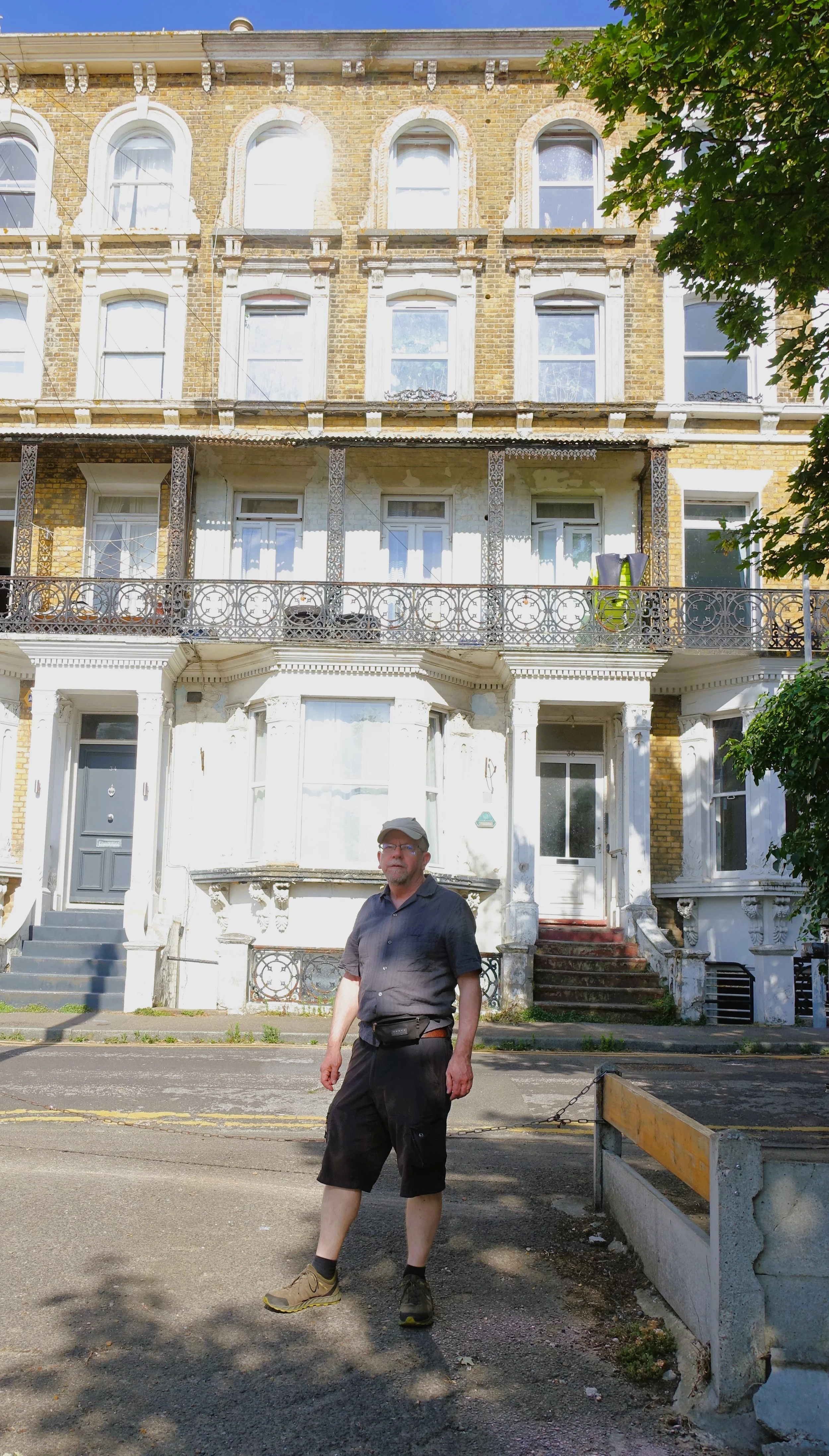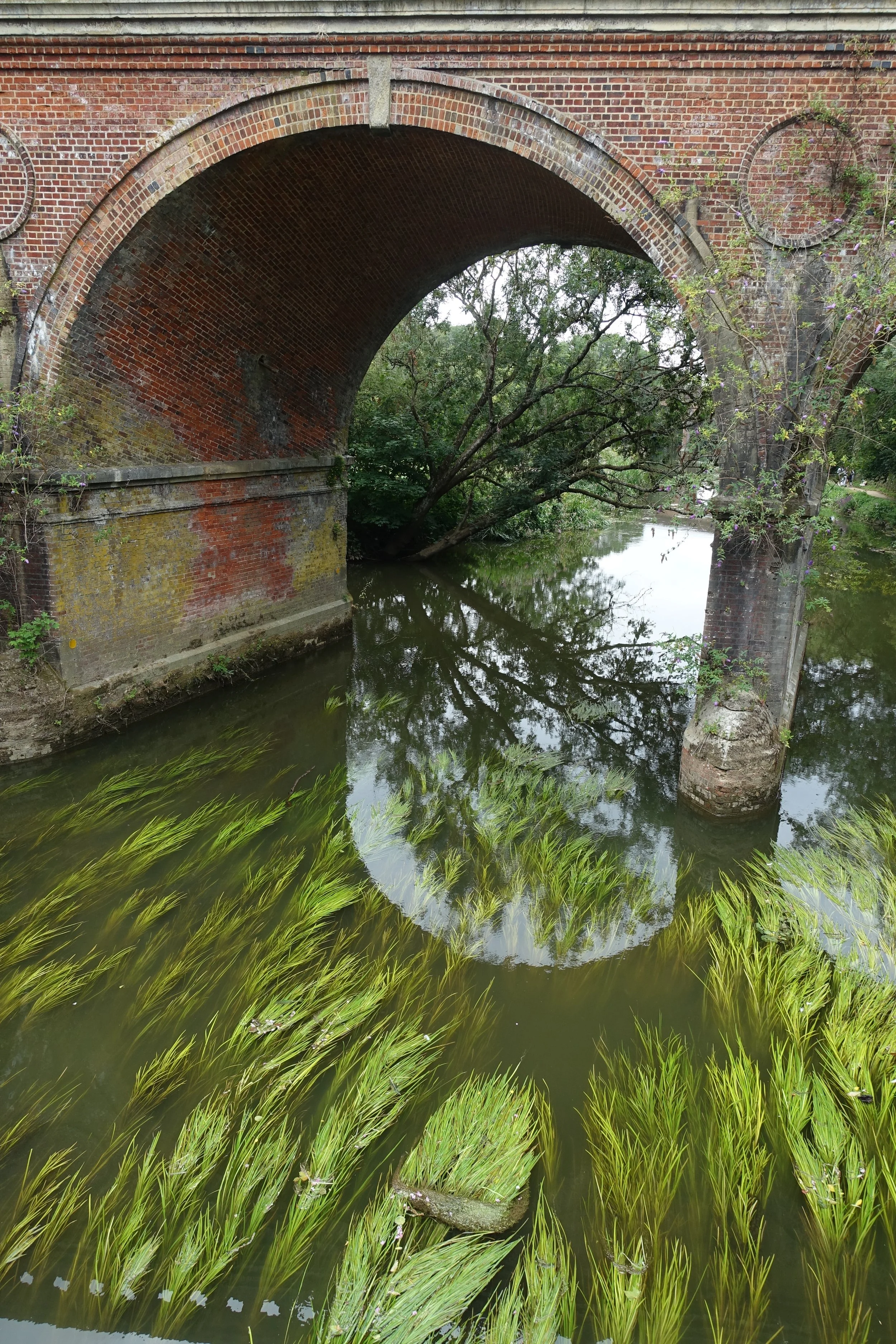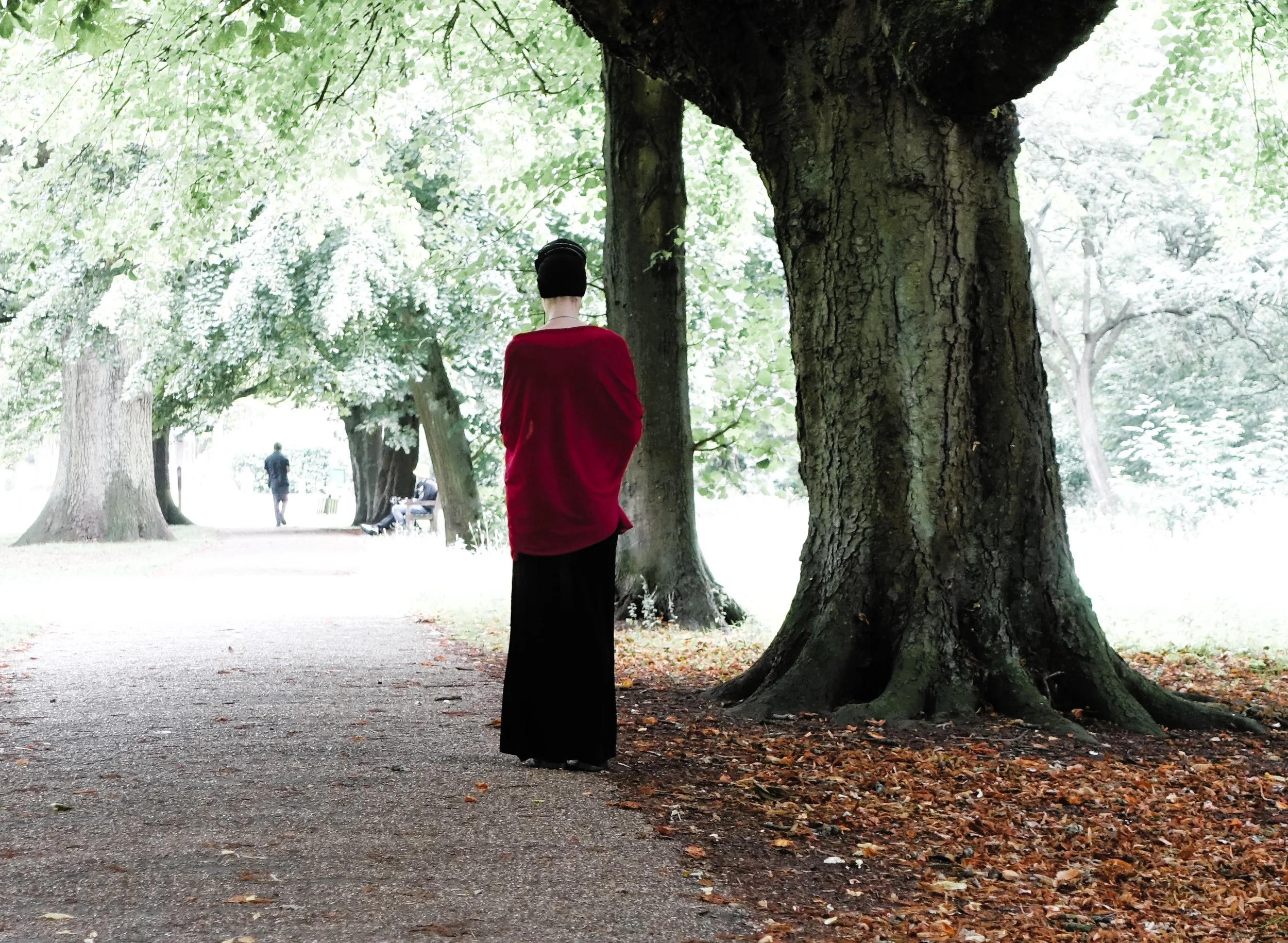England’s dreaming…of foxes?
Should two foxes replace three lions?
While I was recently in England, almost everywhere I went there was talk of foxes. Seen as curiosities at best and nuisances at worst, the red fox was possibly brought to the British Isles by the Normans but was probably here up to twelve thousand years earlier. Intensive agriculture has taken away much of their natural habitat. Like the agricultural workers who lost the right to farm the ‘common land’ during the Enclosure Movement, foxes have been forced to vacate their original homes and way of life. They are now a common species in most towns and cities.
The Lionesses roared to glory in Switzerland, but I was left wondering if the true national animal should be the red fox, Vulpes vulpes. Three lions on the shirt have been good for the women, but one World Cup victory aside, they have hardly brought good fortune to the men’s football team since the Football Association first used the symbol in 1863. Maybe it’s time for a change of emblem. Fans will soon forget the cunning, cruel or sly associations made with Vulpes vulpes if England can win an international tournament again.
And lions have surely fallen out of fashion. I only encountered one lion in England, and that was Aslan in a musical production of The Lion, the Witch and the Wardrobe in Canterbury. One wonders if CS Lewis wanted a very English creature in his story, drawing on the lion worship of the Tudor kings before Richard the First, of ‘Lionheart’ fame, adopted them as his royal symbol. They remain the nation’s ‘national animal’. Hardly an indigenous or friendly one, but it could be argued they are slightly more ‘real’ than the dragon of Wales, the unicorn of Scotland or the Turul of Hungary. Not that I want to sound jingoistic about this, you understand.
It shouldn’t be forgotten that there is a fox in the original CS Lewis novel of 1950. Hollywood extended his role in their 2005 film version of the LW and W story. An AI overview of the fox’s role in Narnia suggests that the fox symbolises those who appear outwardly unholy but possess true faith. So even a traditionalist like Lewis saw merit in the humble creature.
The Baddiel, Skinner, and Lightning Seeds anthem of 1996 contained the lines:
Three lions on a shirt
Jules Rimet still gleaming
No more years of hurt
No more need for dreaming
Lewis expressly stated that he did not like football. He might not have cared if football came home to the land of its origin or not but was unlikely to have swapped the lions for foxes, even though there is hardly a lion born in England. According to Natural England and the Mammal Society, there are estimated to be around 357,000 examples of Vulpes vulpes living in the UK. Ok, there are probably even more rats to be found. And quantity isn’t everything, but they are certainly a symbol of our times.
Beach huts in Thanet-easily reachable by local foxes.
While we enjoyed wonderful hospitality, the passing clouds and sea air of the Kent coast, the Lionesses made a stuttering start to their defence of the European Trophy. Kent foxes can follow a green route down to the North Sea, where they compete with the gathering gulls for the waste left behind by tourists. According to my hosts, these are beautifully coated specimens, so different from the mange-ridden creatures that reside under the sheds of South East London. Economic migrants who found the going tough.
Part of the fox route to the sea involves navigating a golf course. J.M.W Turner said that the sunsets in Thanet were the best in Europe to paint. One can picture him wandering, easel in hand, to find the best viewing point. His walk would not have been spoilt by golf courses or his life put at risk by cries of ‘fore’, as poor driving sends balls all over residential neighbourhoods. There have been complaints from local people about damage to their cars and homes, along with a woman’s jaw broken by a wayward hook. The local club has relocated the hole and flag and moved the problem further up the road.
It seems that the club is continuing the work begun in Thanet by the Luftwaffe during the Battle of Britain, i.e., pounding the local populace into submission so that the entire district can become one giant seaside links course. There are already ninety-four golf courses in Kent. The residents are a hardy breed, and as with the Stukas and Messerschmitts of 1940, they will also repel this airborne attack, although in a more peaceful manner than that carried out by the RAF, as described in the nearby Manston air museum.
The Margate I visited during my teenage years was one of adventure and expectation. The Dreamland Amusement Park offered escape into an adult world unavailable in Luton. Slot machines, pinball and pool tables; bars and a nightclub which tolerated underage admission. All at the bottom of the road from the guest house owned by my friend’s parents. During the busy summer period we slept in a caravan across the road. It was a mad escape from the routines of an industrial town where nothing seemed to happen.
Now Dreamland offers an escape into nostalgia. While the Scenic Railway still operates against the unlikely backdrop of Arlington House, a savage eruption of eighteen floors of brutalist 1960s concrete, the amusement park offers a pale reflection of the glory days before overseas holidays in the sun became available to most. But the site has a stage now, and their summer season offers a journey into pop music of the past. Rod Stewart, Madness, and a version of the Sex Pistols are all strutting their ageing stuff this summer. And the crowds are pouring in. We watched Thanet locals and DFLs (Down from London folk) arriving early from the railway station for the Texas gig. Later, representatives of Vulpes vulpes will follow the golf courses and green routes into the town and mop up the curried eggs and saveloys and the yards of pulled pork stretching around the harbour walls discarded by the concertgoers, saving Thanet District Council on its street cleansing operation and enriching the bushy-tailed ones’ reputation as guardians of Britain’s rapidly ageing youth culture.
I stand in the parking lot where the caravan once stood opposite the Brynn Maria guest house. The elegant buildings across the road are converted into flats now or house public services. Their stuccoed walls grow more cracked and faded by the year. The Turner Gallery, Tracey Emin and money flowing from the capital are injecting new life into the harbour district of Margate, but funding doesn’t reach the whole of the town. The Costa del Dole feeling remains, as does a sense of Luton by the Sea, as impoverished migrants find their place in the sun, or at least in the crumbling back streets leading away towards Cliftonville.
A Lutonian returned to Margate gets nostalgic.
…
Leatherhead is not a painful condition that was common during the English Civil War. It’s a small commuter town just beyond the M25 that benefits from proximity to both London and the North Downs. One of its glorious allotments is simultaneously British and international in outlook. Caribbean, Indian and Chinese growers toil the earth alongside Europeans and the born and bred of Surrey. Eccentric academics work alongside impoverished pensioners. Community groups representing the homeless and people with disabilities base their green recuperative work here. It offers a cornucopia of all that is good in British society. Yet it isn’t a given that things will remain this way. Led by my wonderful hosts, a decade’s battle with the local council has seen off, for now anyway, the prospect of the land being sold for building development. Pressure to house people in the overcrowded South-East of England is a real concern, but destroying this community asset seems counter-productive. The local communities’ determination to keep something palatably good, alive and well goes beyond NIMBYism.
Of course, the allotment’s also a haven for wildlife. The foxes attempt to dig their way into chicken coops, while the badgers will eat anything and can knock down weak defensive structures erected by allotment holders. Deer love to chew the abundant flowers that some holders specialise in growing. On a sunny Friday afternoon, the sounds of drum and bass drift in from the adjacent wasteland. Beyond the lines of bushes, early partying has begun. No, the allotment isn’t a paradise. Some plot holders complain of ‘bling’ from other growers. Piles of building materials suggest that some ‘over the top’ construction might soon emerge from among the courgettes and green beans of an unpopular grower. Some people have held allotments here for thirty or forty years and are unwilling to embrace the bling, let alone give up their little pieces of England.
Easy pickings from the allotment
The Mole runs through the town of Leatherhead. A delightful chalk stream, it faces problems of pollution and agricultural run-off. The streamer weed is unnaturally dense. The Himalayan Balsam has crowded out the native species alongside the banks. The Mole is unique for its swallow holes, where the river disappears underground below the chalk during periods of low water, only to emerge again miles downstream. My imagination is fired by an image of Vulpes vulpes chased by the local hunt when hunting with hounds was allowed. I see him avoiding the red coats by diving in with the fishes, swimming with the chub and dace through the swallow hole to come up for air again, well beyond the horses and their privileged and brutal riders.
Over-fertilised streamer weed in the River Mole
This area of Surrey is now considered part of the Stockbroker Belt. Michael Caine lived on the edge of the nearby Downs. Five hundred years ago it was at the heart of social revolution as both the Diggers and Levellers emerged here, promoting ideas of social equality long before the words were commonplace. In 1649 Gerrard Winstanley and his followers took control of the common land, first in Surrey and then further afield. Local landowners eventually used armed force to defeat these colonies. Traces of those feelings must have been left in the soil as the allotment growers of Leatherhead rose to stake their claim to a decent way of life.
On the Sunday evening, we watch the Lionesses battle their way to an unlikely victory against a free-flowing Spanish side on penalties and win their second European Football Championship.
No more years of hurt
No more need for dreaming
In the ‘spoons pub later, enjoying a celebratory pint of real ale or two with my host and his pals, we wonder briefly why the English men’s side can’t show the same kind of grit and resolution that the women have developed. It’s a brief conversation because no one can answer that question. We drift into discussion of wider footballing matters. Apparently, I met one of the pals over twenty years earlier at a Crystal Palace v Wimbledon fixture. I have the vaguest memories of Selhurst Park (Palace 3-Luton 3 on one occasion), but that London derby match has fallen out of my recollection or into his, with a sense of mild concern. For my memory or his imagination. We wander home in the gentle evening through quiet Victorian streets with a sense of blockish solidarity which only alcohol can induce. A waft of evening primrose brings a sense of female mystery and intoxication to the street, but it’s a passing interlude in our male stroll. We could be eighteen again and make our farewells in time-honoured fashion. All is well with the world.
…
Letchworth was Britain’s first garden city and claims to have the nation’s first roundabout, built in 1909. This was a Quaker town and, during my youth, a dry town, where there were no pubs. While not being far from Luton, there was no reason to visit. Only now do I appreciate its green streets and overriding sense of calm. And as the Quaker influence declined, there is also the inevitable Wetherspoons pub, where apparently, people start the day early with a pint.
On the Grange Estate, one of the first examples of social housing in England, a Wacky Baccy Man looked down into a hole in the wide grassy verge.
‘Wasp’s nest,’ he mutters from his cloud of smoke early on a grey morning. ‘I’ve already told the council about it.’ It must have explained why he was self-medicating so early in the day. Another man at the bus stop is shaking slightly and smells somewhat unwashed, but he makes a point of allowing me to get on the bus first. Letchworth’s that kind of place.
Lenin may have visited in the early twentieth century to see what progressive housing for the working classes looked like. Possibly an urban myth, but he may have stayed near the Common, where we watched a tall, thin, youngish woman in a turban move along the ancient footpath with the aid of a walking cane. At the swings and roundabout nearby, the kids enjoyed their summer holidays with that devil-may-care attitude that only children can really possess. I’m sure it’s an illusion, but Letchworth seems the perfect place to grow up, even today. Even with Wacky Baccy Men and pensioners starting the day at the ‘spoons with a pint of Ruddles.
Like most places I visited, youthful, able and affluent pensioners are the driving force of consumption. On an inconsequential July day, the cafés in the town centre are full of greybeards and their partners, enjoying flat whites and first flush Darjeeling. Caffeine, alcohol and wacky baccy aside, which is quite a lot, I guess, England has become a health-conscious nation. Many people of all ages are looking after their diets on a scale that would have been unthinkable twenty years ago. The other side of the coin is also apparent in the proliferation of fast-food outlets, all-day drinking, extra, extra-large waistbands and ketamine-inspired nights.
And did I see a fox in Letchworth? No, but my generous host did, in his garden, just before we met the man at the wasp’s nest.
A mysterious woman on Letchworth Common near where Lenin probably didn’t stay.
…
People on the bus from Hitchin to Luton all know one another. In some cases, they keep seats free for people who are joining at a later stop. They are a mixed bunch of all ages and races with an overriding friendliness only fostered by the driver’s reluctance to proceed until the last passenger is seated. Something that doesn’t occur in Budapest! There’s a maximum price of three pounds wherever you travel to, which is a bargain for long trips but often abused by bus companies on shorter ones. A black guy with a sight impairment tells me that his mum was the last ‘ clippy’ employed on the route to Luton.
I feel my spirits rise as the vehicle passes through Stopsley and Round Green. In two years, nothing much seemed to have changed. In fact, the starkness of the Covid years seems to have lifted everywhere, and most shopping areas are alive again to one degree or another. Luton Town Centre has retained that strange sense of non-arrival. Of a huge space outside the railway station that has no purpose, with one street leading to Luton Point, the latest name for the Arndale Centre. The others leading to obscurity.
It's disappointing to see a security guard on dedicated duty at Greggs bakers. Although apparently not uncommon in Britain’s poorer quarters. I imagined a gang of unruly foxes rushing past him and forcing open the sandwich and cake displays. The reality of drug-induced poverty and desperation is much more prosaic. Not as dramatic as when wild dogs cruised Luton and Houghton Regis in the mid-nineteen seventies. The dog catcher had retired and was not replaced .A story of dubious credibility was that the hungry pack raided a butcher's shop in Houghton Regis and left with strings of sausages between their jaws. Certainly, there was a proliferation of wild dogs, and a little pack in the Hightown area caused consternation. I encountered three of them near a row of demolished buildings and was lucky enough to have only the sleeve torn off the bomber jacket I was carrying on that warm afternoon. A schoolmate of my brother received bites on his bottom as he fled from the pack. Oh, who can forget those wonderful days of endless school holidays and fun in the streets!
On London Road a topless gentleman cruised the intersection outside the Hardware café. With a broad smile on his chops, he knocked politely on car windows as they waited for the lights to change. He collected his paltry earnings in a neat little cardboard box. Higher up the hill a Wacky Baccy Man swayed towards me in a cloud of smoke, and I was able to step around him with ease. I’m not sure he even saw me.
On the ridge of the South Luton escarpment, many gardens are mature or overgrown, and Vulpes vulpes is enjoying their protection. Foxes roam the tops of the garden sheds at dawn seeking out prey in the undergrowth below. They can break fragile fences and damage flower beds with their fun and games. One had dug deep into a compost heap and enjoyed watching the endless easyJet and Wizzair planes passing above on the flight path. If Luton Airport does ever reach the projected target of thirty million passengers a year, I wonder if the foxes will remain long after the residents have called it a day.
From the railway station I could look out over the flattened surface that will eventually become the new home of Luton Town Football Club. It will be the first club in the UK to relocate from one town centre location to another. From a bus window I thought I could see the course of the River Lea being altered. Which is a major part of the master plan. I hope they get it right with my beloved river. I could imagine displaced rodents rushing across St Mary’s Road to take refuge in the cemetery beside the ancient parish church of the same name. The cemetery is already plagued by rats, visible even during the daytime, and I wondered where the new migrants would find suitable accommodation. They would certainly form rich pickings for Vulpes vulpes as they descended from the surrounding hills under cover of darkness.
Luton has always been a migrant town and, compared to many in the UK, a harmonious and accepting one. At school, virtually all of us had migrant parents from somewhere because Luton offered the highest blue-collar wages in the country. Now most of the industry has departed, and it has become an impoverished dormitory town, serving the needs of the capital city as much as its own residents. Hordes of people migrate to London and then find it too expensive. Some will move to towns like Luton and struggle to gain a foothold in the UK, maybe even commuting back to London, doing cleaning jobs and the like, and paying huge train costs. London Councils have in the past exported their homeless to Luton without consulting the local community. Towns like Luton bear the brunt of rapid social change while the economic benefits are felt elsewhere. Yet underneath the urban blight, self-medication and petty crime, there remains a warmth of spirit, optimism and energy that migrants bring to a community. In the confusion of hyperdiversity, it’s just not always that easy to appreciate this.
The Power Court site where the River Lea is being diverted and the future home of Luton Town Football Club will be built.
I have never seen a rat or a fox at the Vale cemetery in Stopsley. It feels too clean and too municipal for them, although the foxes can be heard gekkering nearby over Lothair Common. As the number of interned people I know has grown over the years, I have become strangely fond of this place. On arrival, I always struggle to locate my parent’s grave. There is something overwhelming about the scale of the cemetery; everything looks the same. I look for the neighbouring burial plots I have remembered there: Patsy Durnin and Guido Centrachio, whose grave is always perfectly maintained. After I find my parent’s grave, I find my brothers easily and then others I know as well. There are Scottish, Irish and Caribbean flags blowing over newly dug areas and Muslim plots everywhere.
A stylish horse-drawn cart emerges along the central lane. A glass roof covers a tiny coffin. It looks like a child has died. Near the entrance a large gathering of Europeans are ready for the burial or cremation that will follow. They look like Romanian families to me, but I don’t linger to discover more. Stopsley Vale Cemetery is on a flat plain, but it is also a great social leveller. Many Lutonians of old stock or new will end up here. How can the migrant communities of the UK be more rooted in Britain than eventually buried six feet under in the Bedfordshire clay?
Enjoying yet more wonderful hospitality in London Colney, I heard curious stories of Bitcoin and weight loss drugs that intrigued me, but there were no tales of foxes. Nor on visits to Harpenden or St Albans. But you can bet Vulpes vulpes was resident nearby. Living off of more expensive scraps in Harpenden, no doubt, but still present.
I doubt Vulpes vulpes will threaten the role of the three lions on an England football shirt anytime soon. The fox seems to offer a different symbol to the nation. One that represents social change, perhaps. For some the fox is a great adapter that has become an urban dweller because of the privatisation of the countryside. For others they are almost an enemy within, not unlike the migrants arriving on the beaches in small boats or overstaying their tourist visas.
Overall, despite the outrage expressed in Epping recently and elsewhere, Britain seems to be the same tolerant country I left almost eight years ago. Yes, there is the common feeling that migration figures have been too high. Everywhere I went there were concerns that the whole of South East England will need to be concreted over to cope with such inflows if they stay at this level. The question is vastly complicated, and I offer no original solutions. Yet I am left with the feeling that nothing terrible will happen in Blighty because of migration. That a way will be found which satisfies employers’ thirst for workers and the needs of citizens to feel secure with the familiar. Not all nations have the capacity to cope with this challenge, but Britain is one that can.






